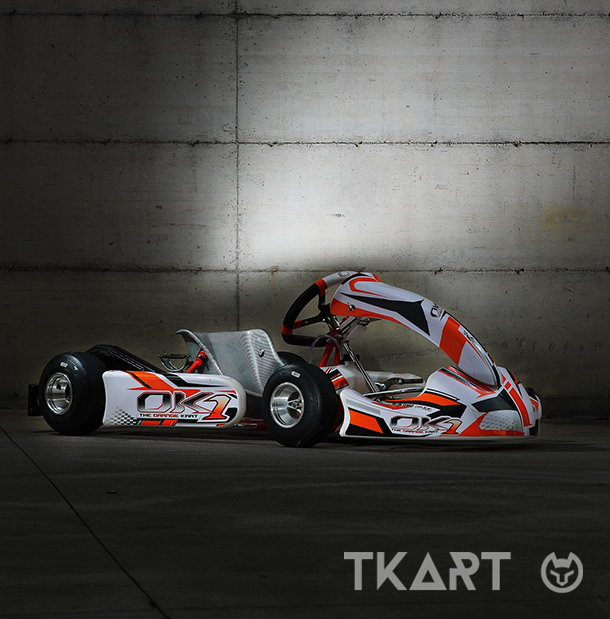In 2020 the FIA Karting International Commission established the first international homologation for the MINI class, unifying the previously national regulations, as is the case for the upper categories. All major manufacturers presented their chassis including IPK, the group which manufactures the karts for Praga Karts, Formula K, OK1 and RS.
The approved chassis is the Monster EVO 3 which is composed by manually welded 28-mm diameter tubes. Its design is characterized by the double bend of the longerons at the height of the fuel tank, thus imitating a feature of the upper category chassis. Compared to the previous homologations, the company introduced a new bearing housing in the rear end, which allows an additional adjustment in height, now there is four in total, which is used for the fastening of the bearing flange. An additional change involves the C5 bearing (it is a much more efficient and smoother), now equipped with 3 axle fastening grub screws to solve the issue of having a sufficient grip on an axle with a small thickness like that of the minikart. Another modification is the supports of the side fairings and front spoiler, now shortened and reduced in diameter. This, in addition to eliminating the previously present Teflon bushing, from the point of view of the kart’s behavior on the track makes the chassis more flexible. The fastening system has been revised as well, in order to tighten the screws without ovalizing the frame tube as this improves the rigidity and reduce weight overall, a new master cylinder support has been introduced, now in a casing, which substitutes the previous welded plate. Amongst the additional features, it is worth mentioning the new fuel tank fastening plate, designed for the proper management of the fuel pipes thanks to the use of guide rings. The OK1 Monster EVO 3 is equipped as standard with the CCS system for the separate adjustment of camber and caster. Compared to the past, it has been simplified to facilitate the adjustment of the chassis even for the less experience drivers thanks to the elimination of a spacer and the fastening of the bushings with the spherical seat in the upper and lower internal part of the chassis’ C.

 Exclusive Content
Exclusive Content
